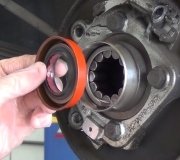Thursday, August 31st, 2023 AT 11:32 PM
Now hear a constant whine coming from that area travelling at highway speeds that was not there before. Road surfaces changed but noise continued. Not noticed off highway but hear rattle occasionally like something is loose. Do new axle assy’s come with grease in them? This work was done at a dealership with aftermarket axle.


